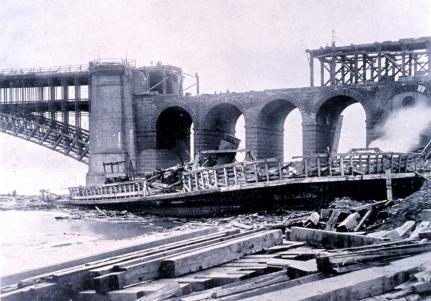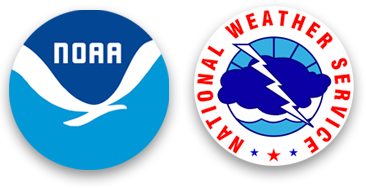John P. Finley's Rules for Tornado Forecasting - National Weather Service Heritage

John P. Finley's Rules for Tornado Forecasting
By Chris Geelhart (Chris.Geelhart@noaa.gov)Above: A tornado in St. Louis on May 27, 1896, tore away some 300 feet of the super structure of the Eads Bridge. Some of the stone blocks were hurled several hundred feet, and a wagon that was on the bridge was dashed to pieces with its two occupants. Image from NOAA Photo Library.
In 1882, U.S. Army Signal Corps Sergeant John P. Finley was placed in charge of the investigation of tornadoes and the development of forecasting methods. During a tornado outbreak that occurred on February 19, 1884, Finley established 15 rules for early tornado forecasting. In 1888, Finley published these rules in the American Meteorological Journal, identifying signs that the formation of a tornado was likely:
- Presence of a well-defined low pressure area.
- Slow progression of the low increasing flow northward of heat and moisture into the southeast quadrant.
- A north-south or northeast-southwest orientation of a trough-like low.
- The descent of a well-marked anticyclone in the rear of the low.
- High temperature gradients.
- Increasing wind velocities of the southeast, southwest, and northwest quadrants of the low.
- Northward curve of the isotherms in the southeast quadrant and eastern portion of the southwest quadrant of the low.
- Southward curve of the isotherms in the northwest quadrant and the northern portion of the southwest quadrant.
- High temperature gradient between the noses of opposing curves of temperature.
- Increasing high humidity in the southeast quadrant of the low.
- Maximum areas of tornado frequency for each state.
- Occurrence of tornadoes in certain parts of the country, in certain months of the year.
- Tornadoes frequently occur in groups with parallel paths, within a few miles of each other.
- Tornadoes always occur in the southeast quadrant of a low several miles southeast of its center.
- Easterly curve in the southwest and northwest quadrants of a line separating the northerly and southerly surface winds of the low.
Unfortunately, as Finley was developing his techniques, the tornado prediction program encountered a huge road block. The word "tornado" was banned from official forecasts by the U.S. Army Signal Service due to limitations with the observing network and concerns over causing mass panic among the general public. The ban carried over into the Weather Bureau's tenure, and persisted for a number of decades.
Information from the NOAA 200th celebration website, https://celebrating200years.noaa.gov/magazine/tornado_forecasting/finley_rules.html
